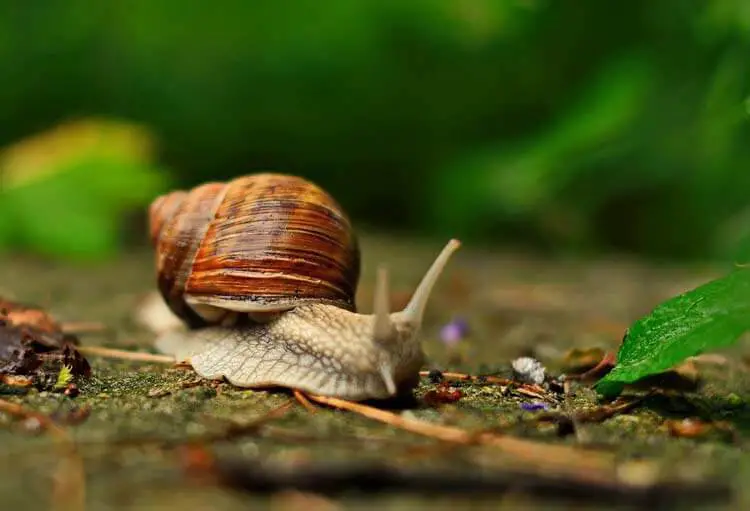Growing Kale in Containers or Pots
Is growing kale in containers easy? Definitely yes. Before going into the subject, let us see some information on Kale.
Kale (Brassica oleracea) is also called leaf cabbage. People grow kale for its edible leaves. Normally, this cabbage has purple or green leaves. Also, these leaves do not develop central heads. Hence, growing kale in containers or pots is easy! Although many domestic forms of kale are available, biologists relate them to wilder varieties.
This article focuses mainly on growing kale in containers or pots, managing pests & diseases, harvesting, and its uses.
Table of Contents
Growing Kale in Containers or Pots?
In fact, Growing kale in containers is very easy. Even a novice can grow it successfully. In addition, you can harvest this vegetable quickly compared to most of the crops.
You can harvest kale almost every week, throughout the year. This is a frost-hardyplant that loves to grow in cool weather. The light frost adds sweet notes and improves the flavor. As you need, just pick off the outer leaves. They will regrow within a week!
During the hot summers, the flavor of this crop dilutes a little bit. it also tastes slightly bitter.
This crop has many essential vitamins and nutrients. You can eat them fresh or add them to your salads, soups, smoothies, Etc., You also have the option to freeze or dry this crop, for future use.
You can grow kale with its cousin varieties like onions and beetroots. This gives the benefits of growing multiple vegetables. These related plants support each other while growing.
Growing Kale in Containers – Seed Propagation
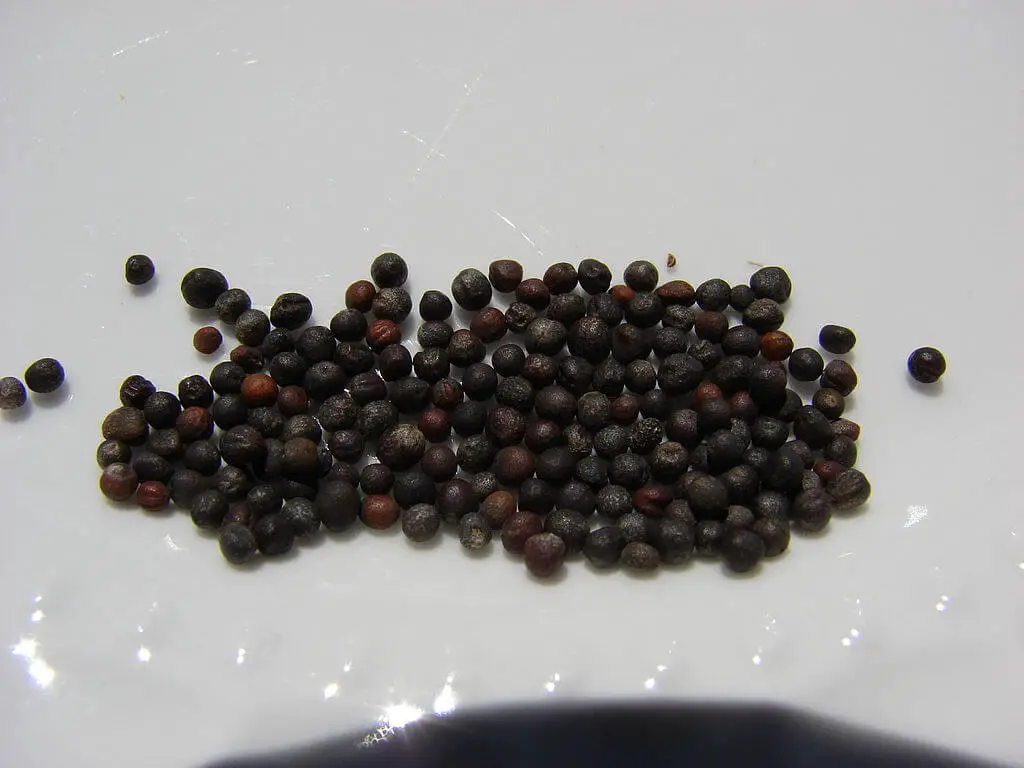
Photo by Forest & Kim Starr (Wikimedia Commons) (CC BY 3.0)
Always buy good quality seeds for growing kale in containers or pots. You can sow them from early spring to late summer. However, it is advisable to start sowing seeds six weeks before the last frost date in your area. This gives enough time for plants to mature before the hot weather of summer arrives.
If you live in mild winter regions or Sothern US, you can start sowing anytime between early fall and early spring. This helps plants to mature before summer.
Follow the steps mentioned below:
Plant the seeds 1/4 – 1/2 inch-deep in planting trays. Make sure the distance between them is at least 4 – 10 inches. You can also find more specific instructions depending on the variety in the seed packets.
Make sure the soil is well-drained, light, and mixed with organic mixtures. Water the soil until it becomes reasonably moist (not soggy)
Place the trays near the windows for sunlight. They require a minimum of 6-8 hours of sunlight. If you do not have sunlight receiving spaces, then place the tray under full spectrum grow lights.
After a couple of weeks, thin the planted seedlings. Typically, you can expect true leaves in about a months’ time.
After the true leaves develop, transplant the seedlings into large containers.
You can also sow the seeds directly in the containers. But make sure to do that after the frosting period. However, the frequent relocation of trays (during the initial stages of planting) is easier compared to that of large containers.
If you plant the seeds in late spring or early summer, the growth process will be quite slow. Don’t worry! The growth process will speed up during winters.
Growing Kale in Containers – Maintenance
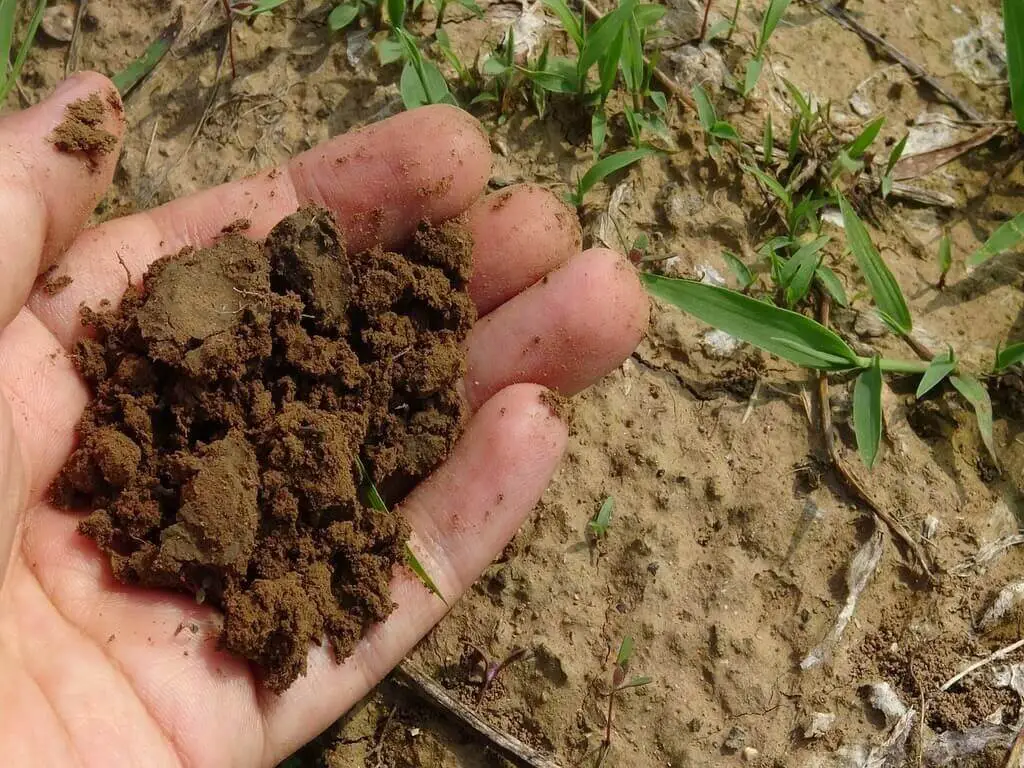
Growing kale in containers or pots requires more attention than those in the ground.
Normally, container soil dries faster in hot summer weather than the ground soil. So, check the container soil for moisture frequently. If the top (one) inch of soil is dry, apply water.
Generally, the plant roots in the container cannot grow beyond the container boundaries to fetch new nutrients from the ground soil. In worst case, frequent watering flushes the already present nutrients too.
To deal with this odds, continue feeding the plants with half-strength fertilizers twice a month.
To thrive healthier, this crop also requires about 65°F day time temperatures and about 50°F night time temperatures. Hence, you can grow them even in the basement.
Make sure there is air passage wide enough to facilitate adequate airflow between the plants. Also, water reasonably. Avoid under watering so as to cause drought and overwatering so as to cause waterlogging. These steps are crucial to prevent harmful Fungai and diseases that ruin plants.
Typically, some species of kale can grow tall in excess of 3 feet. So, consider the space available before selecting a variety. For small spaces, purchase dwarf varieties. With their compact and cute nature, they can decorate small spaces beautifully.
In fact, some species of kale are both ornamental and edible. You can use them to decorate your spaces like decks, balconies, borders, markings, Patios Etc.
Chemicals
Amend the soil with organic matters such as manure or compost. Kale prefers to grow in mild alkaline soil with a pH of about 6.0 – 7.0
Always mulch around the plant base. This keeps roots calm and cool. To retain the soil moisture, you can use a straw mix as a mulch.
Apply NPK fertilizer (5-10-10 or 10-10-10) mixed with water at least twice a month.
Growing Kale in Containers – Managing Containers
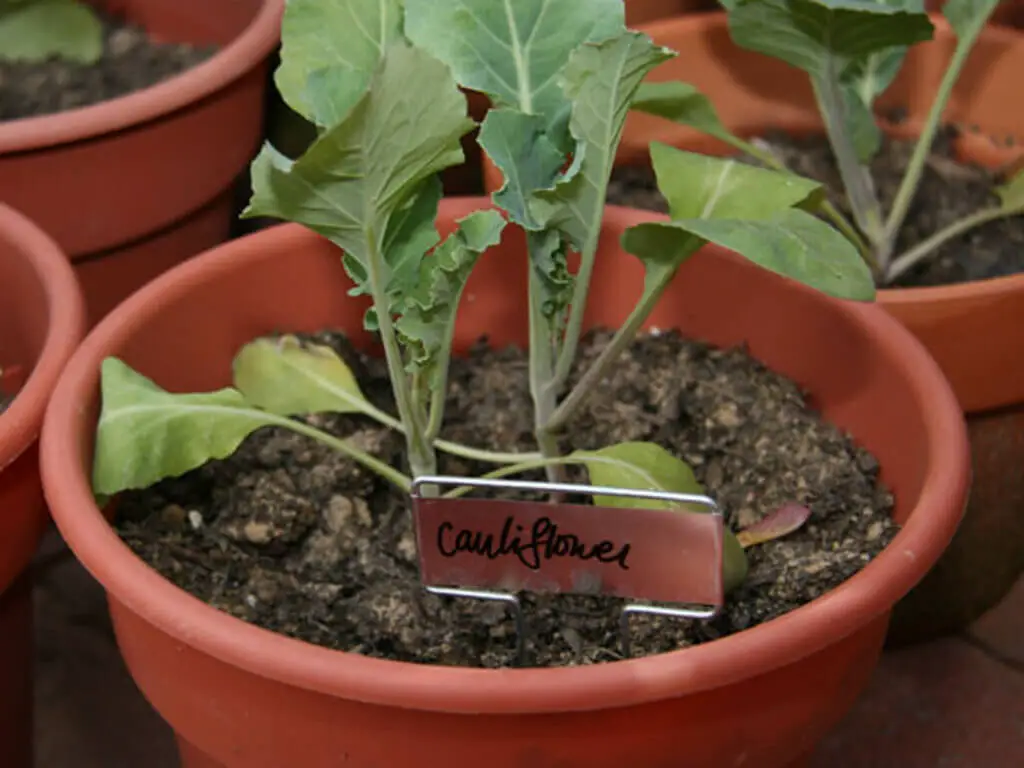
Photo by LollyKnit (CC BY 2.0)
For growing kale in containers or pots, purchase the containers carefully. The containers must be at least 12 inches deep and 12 inches in diameter. The greater the number, the more will be the ample area.
Most container plants fail due to the diseases like root rots. The excess water accumulating at the container bottoms causes these harmful diseases. Hence, make sure purchase containers that have good draining facilities.
Use good quality draining materials like Coconut coir, Pinecones, sphagnum moss, window screening mesh, small stones, Etc. at the container bottoms. They prevent the container soil and its nutrients from washing away. They also provide good drainage path for the excess water to flow away.
Pests and Diseases
Growing kale in containers or pots is easy. But the crop may be susceptible to spider mites, aphids, Etc., You can control this by spraying water with force using jet hoses
If the problem repeats, treat them with insecticidal spray formulated for vegetables. Normally, you can apply these types of sprays until harvest. They are safe to use on edible products.
You can handpick caterpillars, harlequin cabbage bug, snails, slugs etc., and dispose them off in soapy water. If the problem persists, treat the pests with Bacillus thuringiensis. This chemical can kill many pests and worms almost instantly, as they pass through it. Mostly, all the BT packages contain the usage instructions
Growing Kale in Containers – Harvesting

Generally, you can harvest baby kales after one month and big Kales after 2 months. In about a month, the baby kales will develop atleast four sets of true leaves.
Similarly, the large kales will develop about ten large outer leaves in about a couple of months. The size of the leaves decreases as they approach the center.
The first harvesting season is usually in late spring or summer. The second harvesting season is in autumn.
However, there is nothing called a perfect time’ to harvest these plants. If you prefer smaller green leaves, pluck them at younger stages. If you aim larger kales, wait until they develop longer leaves.
Be aware that, if you wait too long, the older leaves will be discolored naturally and fall out. If you come across this situation, just remove the fallen leaf and continue harvesting good ones. You can also use fallen leaves for compost piles
You can harvest almost every week depending on the zone you live in and the prevailing climate at your place.
Harvesting Mature Kale
You can harvest all kale varieties and most its cousin varieties in the same way as listed below
Just grab the stem base of the leaf and pull out downwards. Repeat the process for collecting other leaves. Leave at least 5-7 central leaves, so as to facilitate the new growth.
Make sure not to disturb the central portion. Normally, this portion has baby leaves and fresh growth emerges from here.
We recommend using clean and sharp garden shears to cut the leaves off the kale. Typically, this makes the harvest fast and safe.
Particularly, if the soil density is low, or the plant is new, using shears prevents damages to plants while harvesting. In addition, it also ensures speedy, disease free regrowth, replenished with new energy.
While harvesting, inspect the plants for pests and disease infections. If the plant is not infected, continue the harvest as usual. However, if the plant is infected, try to treat it.
If the infection is not cured, it is recommended to pull off the entire plant. After that, treat the soil if required before growing new plants. You can also use the infected plant in your compost pile mixture.
Harvesting Baby Kale
If you prefer baby leaves, they can appear within a months’ time. Most gardeners prefer Red Russian variety kale for these baby leaves.
Although you can easily pluck them, it is advisable to use shears. This prevents plant damage to the most part. Cut the small leaves at their base.
Typically, the growth portion is at the center of the Kale plant. The stems shoot up from here and the leaves develop on these stems. This portion also contains inner leaves that are responsible for the fresh growth.
Hence, do not damage this central portion while harvesting. Cut the leaves just below their emerging point on the stems. This helps the plants to regrow readily, replenished with fresh energy.
Pigeon Attacks
Some birds like pigeons love to feed on brassica family plants including kale. Usually, these birds destroy the tender true leaves. As a result, the plants die at the initial stages itself.
Eating through the outer leaves, these birds can also destroy the inner small leaves and the core itself of the young plants. As a result, the entire plant dies off in no time!
Therefore, protect the tender seedlings and young plants with net covers. Continue this protection until they grow strong enough to withstand the attacks from birds like pigeons
Cultivars
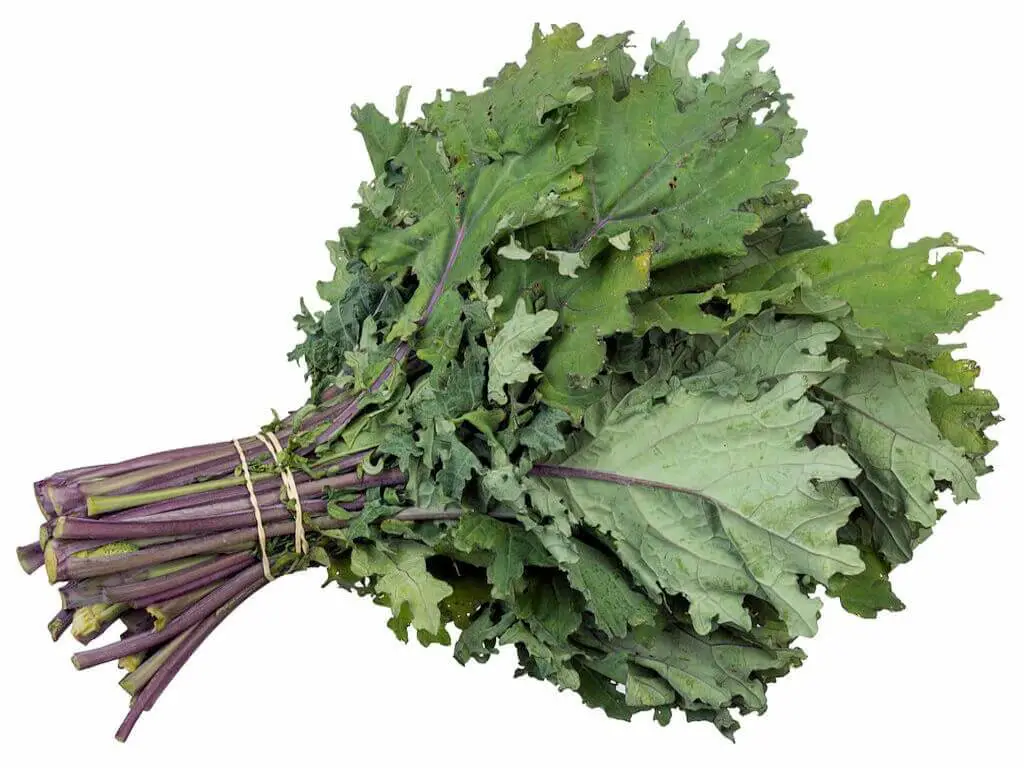
You can differentiate Kale varieties according to the stem length or leaf type.
Main leaf type classified varieties are listed below:
Plain-leaf – White Russian kale, Red Russian Kale
Curly-leaf – blue curled kale, Scots kale
feathery leaf (a cross between plain-leaf and Curly-leaf ) – Crane Feather kale
Bumpy-leaf – black cabbage
Ornamental (Less tasty and has tough leaves) – peacock kale, coral prince
Other famous varieties:
Rape Kale – The other name for this verity is the “hungry gap” due to its ability to grow well in winters.
Jersey kale or cow cabbage – This is an extra-tall variety of the kale.
Chinese kale – often used in Chinese cuisines
Uses
Growing kale in containers or pots has many uses. You can use them in your kitchen while cooking food, decorate your premises and so on. Some of their uses are listed below:
Ornamental Usage
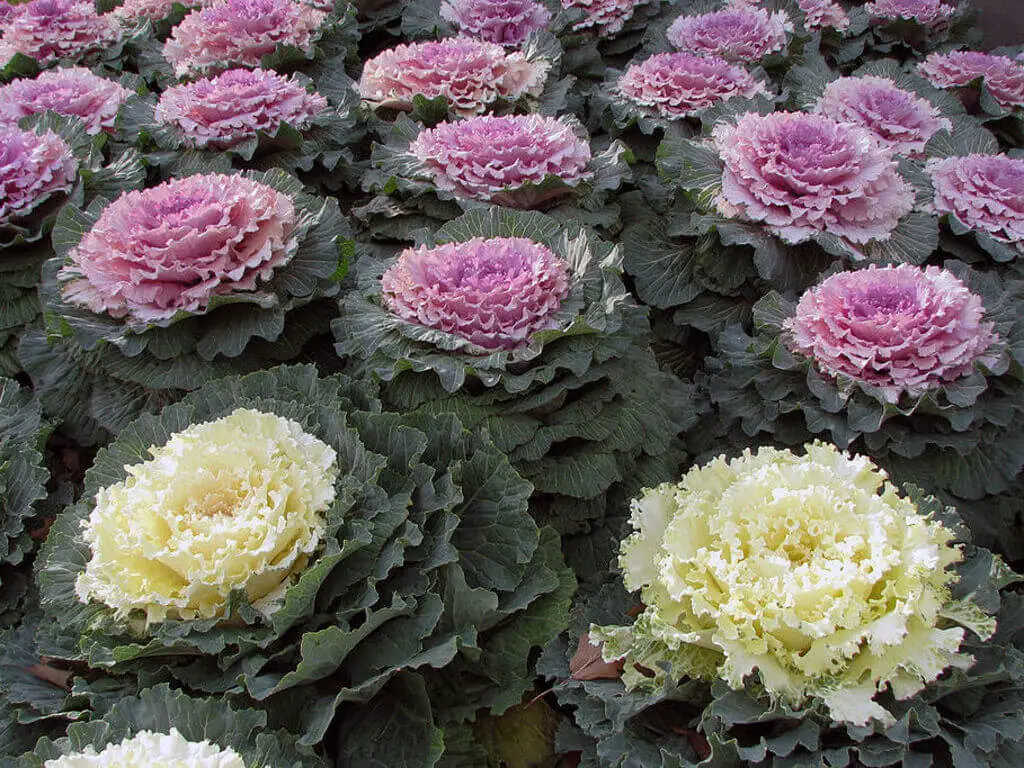
Photo by terren (Wikimedia Commons) (CC BY 2.0)
Ornamental kale varieties have beautiful leaves in many colors including lavender, violet, blue, pink, red, and white.
Different varieties of ornamental kale include color up kale, peacock kale, chidori kale, kamone coral queen, coral prince.
The ornamental kale is also an edible plant. But the taste is comparatively less than other varieties. Some Florists use ornamental kale’s colorful leaves in wedding bouquets and vegetable bouquets.
Food

Photo by M.Minderhoud (Wikimedia Commons) (CC BY-SA 3.0)
Boerenkoolstamppot is a famous winter food in the Netherlands. Its main constituent is curly kale along with fried bacon and mashed potatoes. Consumers usually have this delicious food with rookworst (“smoked sausage”)
If you live in Europe, you would be familiar with “Kohlfahrt” (“kale trip”) event held In North Germany. During this event, the people gather at an Inn after hiking. The event organizers serve them Kale foods usually with Kohlwurst (“kale sausage”) and bacon. In North Germany, consumers use kale as a comfort food and staple food.
Italian Kale serves as an important ingredient in Italian foods, particularly in ribollita (Tuscan soup)
Caldo verde is a famous Portugal soup. Its main ingredients include diced kale, pureed potatoes, olive oil, and other spicy sausages. Salt is added to taste.
Most of the Scotland’s traditional foods have a strong kale base.
Ireland’s traditional dish “colcannon” consists of kale as the main ingredient along with mashed potatoes and other sausages. They serve this food mainly on events like Halloween.
Snacks
In major supermarkets, people use to buy Flavored “kale chips” as an alternative to “potato chips”.
Similar Posts
Growing Elderberry Bush
All about Bunching Onions

